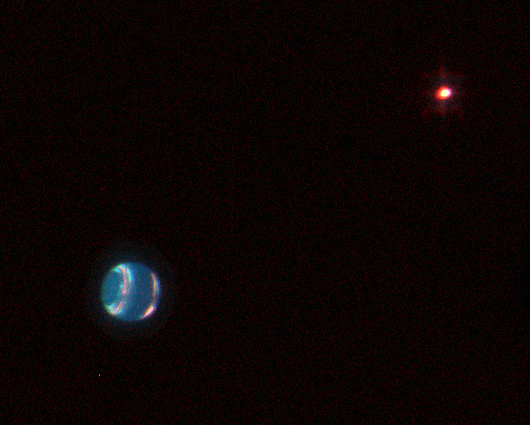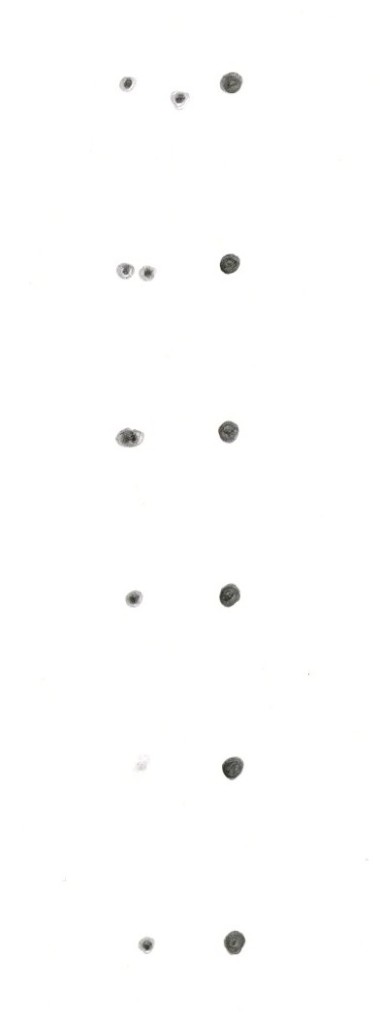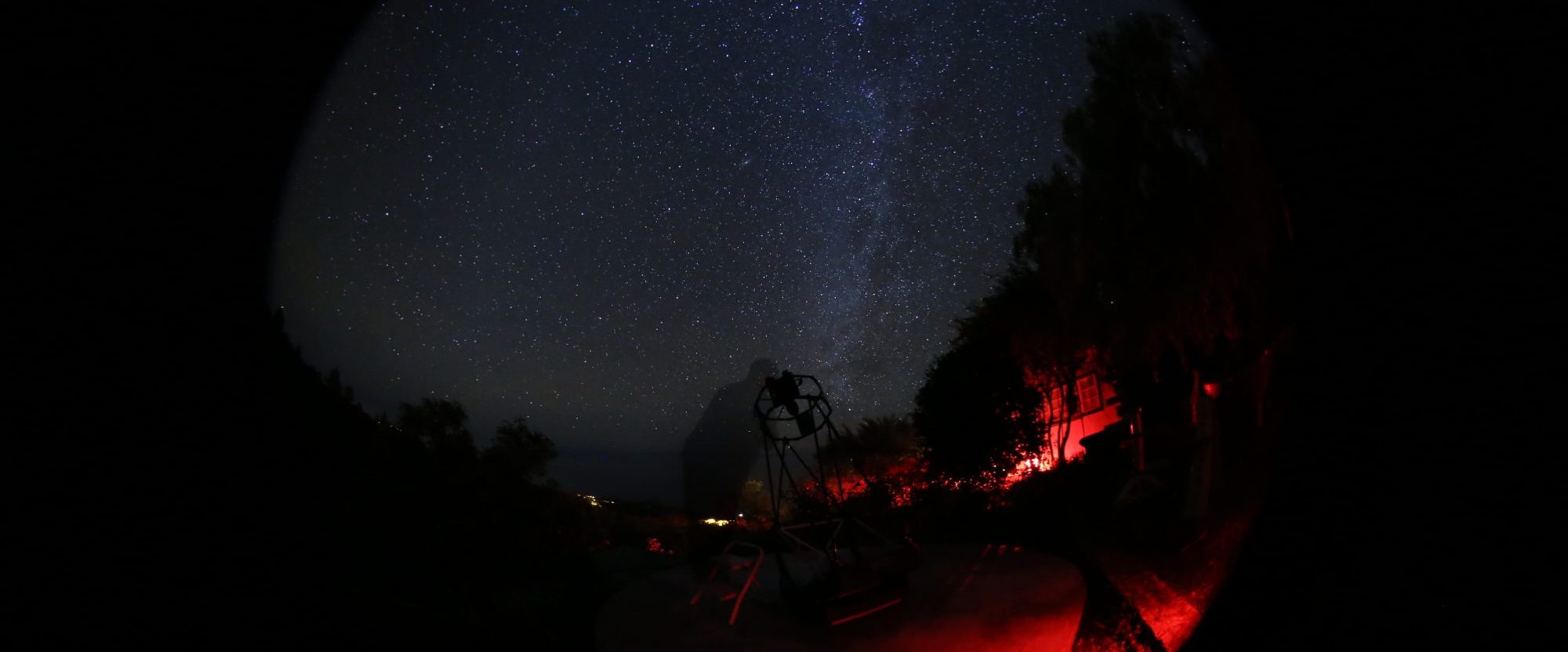
Triton is surely not an everyday’s target for visual observers. Neptune’s largest moon is far and faint. But on October 6, it happened to eclipse a distant star – which led to an impressive visual observation on the very edge of the solar system.
Most telescope owners may not have seen Triton, but actually this large moon in Neptune’s system is surprisingly bright at 13 mag and can be glimpsed in a good 6-inch. In my 20-inch Dobsonian, it is “glaringly bright” in good conditions.
The event
On October 5th, 23:48 UT, Triton was set to eclipse the star UCAC4 410-143659, for about 160 seconds for my observing spot in central South Germany. The star would be at 12.4 mag, Triton at 13.5 mag, both well above the limiting magnitude for the 20-inch. The event would take place low in the southwest, at about 23° above the horizon.
A severe storm battered Germany on October 5, with several people dead and all train services in Northern Germany terminated. In the evening, it was raining hard where I live. But the forecast was good, promising very clear skies.
Where is Neptune?
And indeed the sky cleared up perfectly. With my friend Klaus, co-founder of “interstellarum” magazine, I met at our old deep sky site near Kreben . We soon realized that this session would be completely different from observing clusters and galaxies: The full moon was blazing from a cloudless sky, its light overwhelming everything but the very brightest stars.
As Dobson traditionalists, we would starhop to Neptune. As no stars in the vicinity could be seen with the naked eye, this task proved to be more complex than expected. Finally, we arrived at the spot: Neptune was plainly visible as a pale blue disk. And besides it was Triton and the star soon to be eclipsed, the latter a bit brighter than the planet’s moon.

Action!
We were about three hours early to see the star approach Triton. The seeing wasn’t perfect, so 425x was the limit. For the next two hours, the star was coming closer to Triton. About 45 min prior to the event, the star and Triton could be separated with difficulty. 20 min later, only an elongated image could be seen.
For the last 15 min before the eclipse, both objects appeared to form one stellar image. Both me and Klaus, sitting at our telescopes and peering into the eyepiece, were anticipating what awaited us now. Regarding the quite small drop of magnitude, we were wondering if anything would happen at all.
Very much to our suprise, the image of the star and Triton suddenly vanished completely! For the entire eclipse of just under 3 min, a very faint spot could be just glimpsed! Where was Triton?
All of a sudden, the star reappeared! We were fascinated: What an incredible observation in a distance of 30 AU!
Fortunate circumstances
It appears we had been really lucky – not only with the weather, but also the special circumstances of this event. In a moonless sky, both the star and Triton would have been much brighter. But the full moon diminished their light to an extent that both could be seen well, but not much above the threshold of visibility. As Neptune approached the horizon, the limiting magnitude went even lower, so that it appeared to us Triton had almost vanished, while it just had been sinking to the horizon.
Sometimes, it’s all about to be in the right place at the right time – and with the right telescope.
Links

